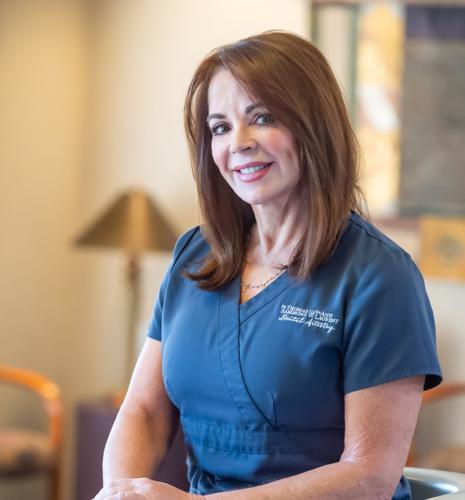After graduating from LSU School of Dentistry in 1983, Ann Laurent was one of only three female dentists in Lafayette.?In 1998, she started her own practice, Dr. Ann Laurent’s Dental Artistry. In 2017, she sold her practice, and it was renamed Sammons Laurent Dental Artistry.
Today, she remains a trailblazer for aspiring women in a practice that helps patients achieve harmony when their outer smile mirrors their inner one.
Her personal sense of spirituality informs her passion for beauty and healing in mind, body and spirit.?
How have you used your desire for harmony and artistic expression to change the dental space??
I don't think you need to do a lot of research to know that most people do not like going to the dentists. Particularly people from a couple of generations ago or even my generation, the dentist was a painful event?— a lot of people got hurt and traumatized at the dentist.?
There's a lot of, really, PTSD with people who are storing that trauma. Studies show that there's three reasons people don't seek regular dental care: money, time and, most prevalent, fear.
Knowing that, I thought, "What can we do to help mitigate that (fear) and really take it seriously?— because a lot of people have been shamed about their anxiety or their fear of the dentist.?
We wanted to remove the same from the equation, honor the past experiences and do what we can to help empower people to work through their fears. It was as simple as listening to people.?
Can you give us some examples of what people were afraid of??
Some people don't like the sound of the drill, the visuals of all the tools or the old medicinal smell. I made it a point years ago when I was establishing my own practice to look at all the senses and ask, "What can we do to make the experience more comfortable?"?
What do you do to combat people's fears??
We have windows to look outside so patients don't feel like they're closed into a box, so to speak. We have headphones where you can pick your music of pleasure to sit and listen so you can drown out some of the unpleasant sounds going on. We have chenille blankets to make you feel cozy and warm.
I had someone come into the office once who sat in the reception area. My staff asks, "How can we help you?" He replied, "I'm just checking out the smell." For him, it was a conditioned response that was going to bring back a traumatic memory.?
I realized smell was important too, so we started baking fresh baked bread in the office like grandma's house. Someone gets picked every day to have the bread, and it's just become a fun gift-giving ritual.?
People really appreciate all those little details. We want them to know that we care about them as people and certainly about their experiences. I always preface appointments with, "I will never do anything that you don't want me to do. You just raise your hand, and I will back off. We will find another way."?
How have people responded to your practice??
People are pleasantly surprised because it does set us apart. They haven't been treated with that kind of attention. What's the old adage? People don't care how much you know until they know how much you care. That translates.?
This is a long-term relationship, not a one trick pony, hopefully for the extent of people's lives. Our tagline is, "We pamper you and your smile." They're not just a patient, they're people and human beings who have had experiences?— and some of them not so pleasant.?
We want to change the perception of what coming to the dentist can feel like. One of the most rewarding things for me is being able to see people become empowered within themselves.?
Can you tell us about the festival you started in your neighborhood, the Chelsea Art Fair??
When I had children living at home, I wanted to instill them with the sense that while we are extremely fortunate, there are people that are not so fortunate. And it's our responsibility to give back to help those less fortunate than us.?
We started an art fair for the kids in the neighborhood for them to do different crafts. There were stenciled Christmas gift bags, jewelry, paintings, baked goods, etc. It was all done by children. We opened it up and displayed and sold everything, then donated the proceeds. Each year, the kids would vote, and we would pick a different organization. After, we would bring them to present the money that they had raised?— just fostering a sense of community within a community so that the kids in our neighborhood had that sense of working together for a common goal to give to the greater good.?
Now that you've sold your practice, what are you doing now??
I'm still practicing?dentistry but very part time. Maybe one or two days a week.?
After I sold my practice, I wanted to find something else. I wrote in my journal six years ago that I wanted to breathe back into the world in a different way. Now, just serendipitously, I ended up into the world of sleep apnea.?
My son came home for Christmas last year at 29 years old, snoring like a freight train. I took a deep dive, and it's just been fascinating of the connection between how many people have disordered breathing and its connection to not just sleep apnea, but high blood pressure, gastric reflux, other inflammatory conditions, anxiety and depression.?
I've gotten really passionate about this and started bringing it into our practice.?


